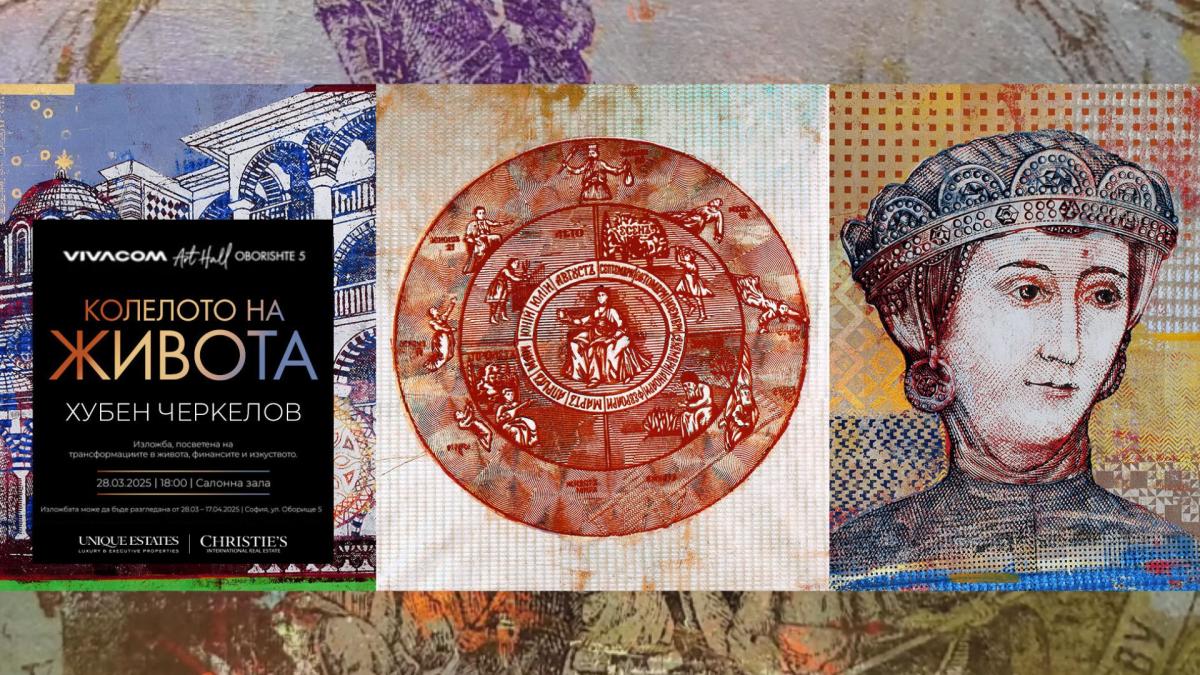

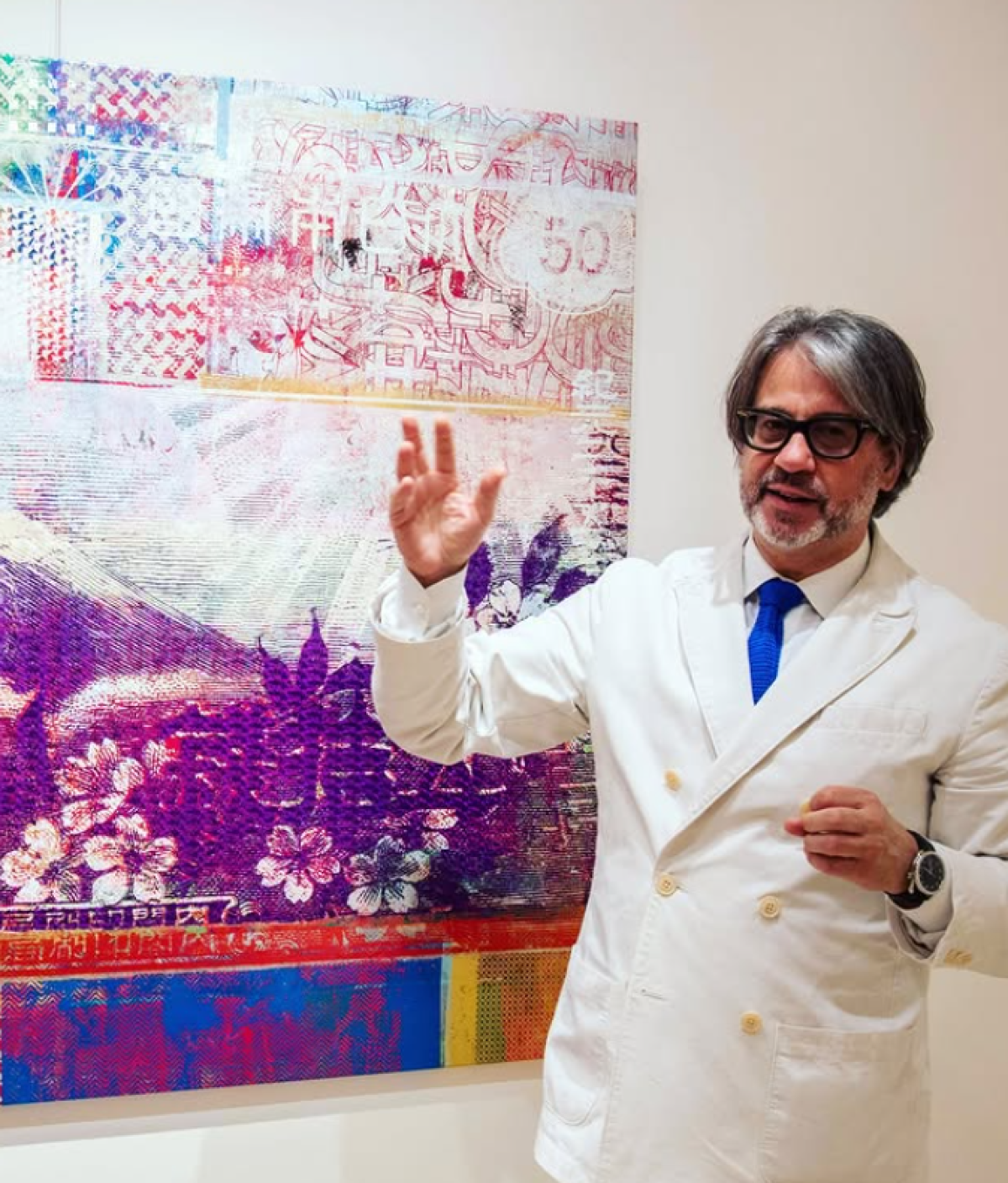
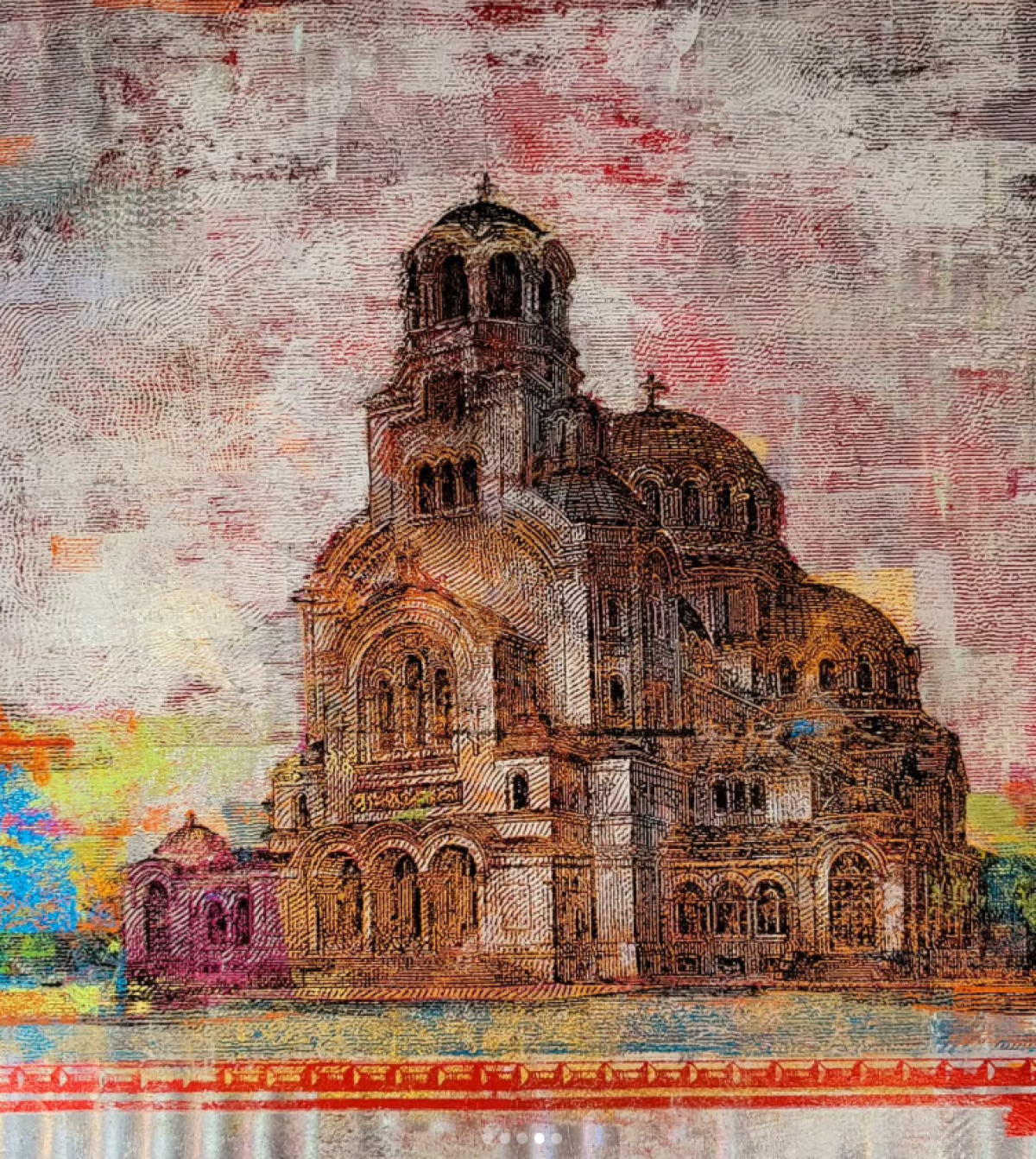
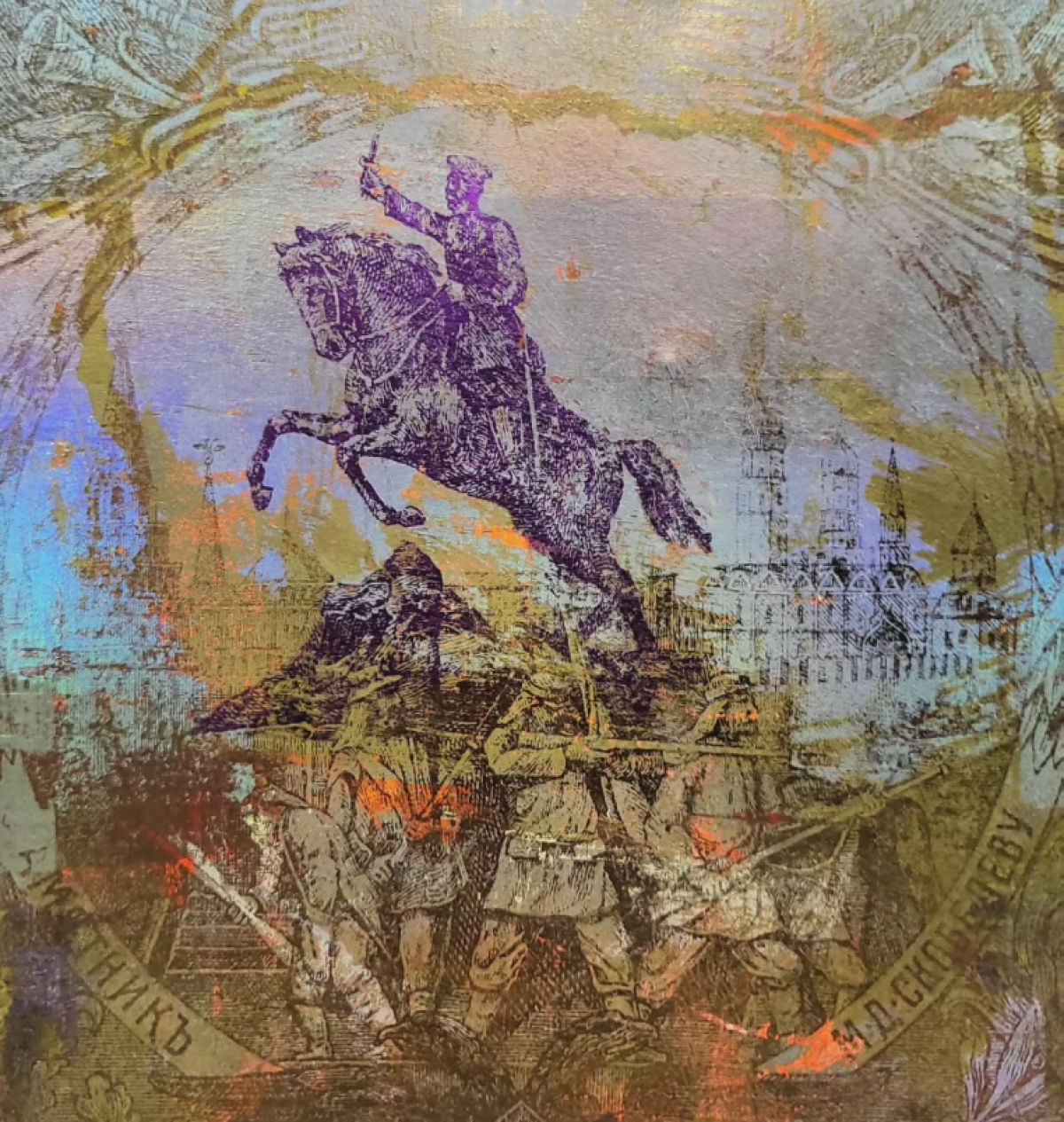
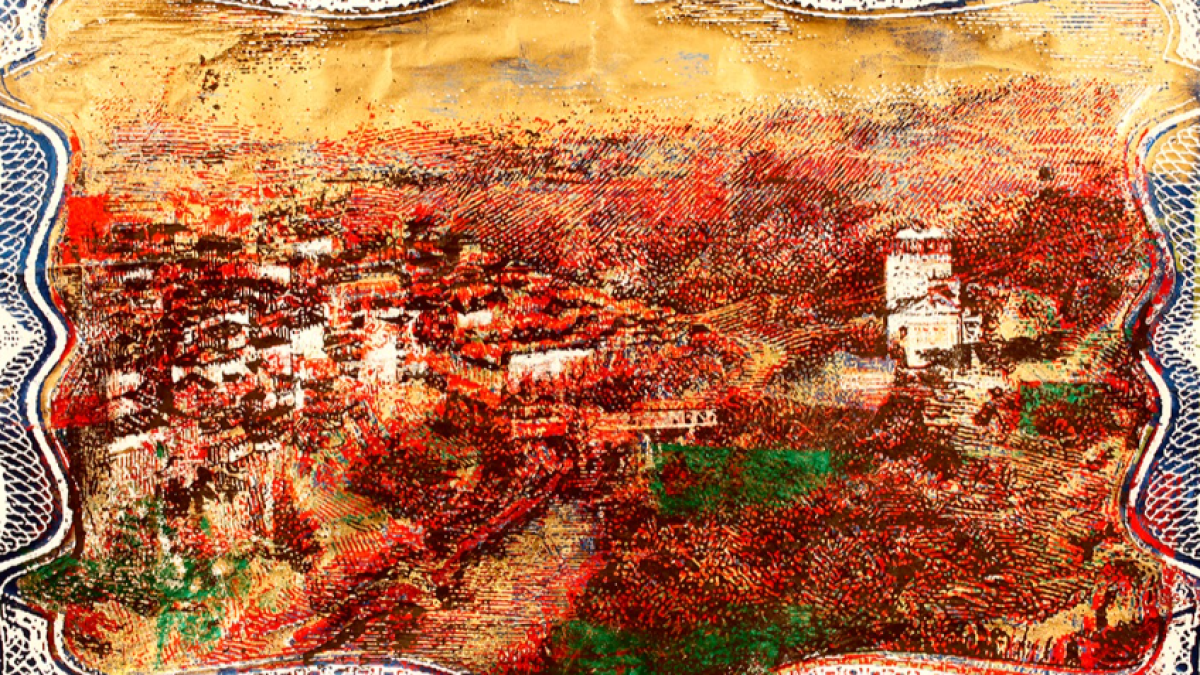
In just a few days, the long-awaited exhibition of world-renowned Bulgarian artist Huben Cherkelov (Huben RT) will open in Sofia. After a four-year hiatus, the artist will present for the first time in Bulgaria his exhibition The Wheel of Life, inspired by the upcoming introduction of the euro in the Republic of Bulgaria. The official opening will take place at 6:00 PM on March 28, 2025, at Vivacom Art Hall Oborishte 5 Gallery, located at 5 Oborishte Street. The exhibition will be open to the public with free admission until April 17, 2025.
Unique Estates | Christie’s International Real Estate is delighted to be a partner of the event, supporting art and Bulgarian artists.
The concept of The Wheel of Life exhibition is to explore the cycles of life through images depicted on Bulgarian and European banknotes, culminating with the euro. The artist incorporates historical Bulgarian banknotes as well as those from other countries that have successfully transitioned to the euro. Huben Cherkelov’s paintings are visual representations of old currencies from various countries worldwide. He transforms money into objects, artifacts, paintings, and portraits, reflecting on the relationship between history, money, art, and the market. The core theme of the exhibition revolves around transformations—within life, finance, and art.
"The Wheel of Life" (known as "Wheel of Life" in English) is recognized in Buddhist philosophy as "Samsara." My starting point was the fresco of the same name by Zahari Zograf, located in the Transfiguration Monastery. The other works in the exhibition also relate to transformations in life and art. Some ideas stem from Bulgarian banknotes, while others come from European currencies and the euro, now reinterpreted into permanent works of art. The dialogue that the exhibition aims to provoke is about permanence and transformation—not only in finance and politics but also in life, power, and art. A significant aspect is also the beauty of the artworks themselves, emphasizing faith in the meaning of life and fostering optimism for the future," shares Huben Cherkelov (Huben RT) about the exhibition.
"The idea that human life is divided into distinct stages has existed for millennia, recurring in literature and art across all historical periods and regions. The early Greeks were particularly attached to this concept, with its earliest mention by the lawmaker and poet Solon (circa 600 BC), who described ten stages of seven years each. Hippocrates (circa 450 BC) proposed seven stages, while Aristotle (circa 350 BC) spoke of three: youth, the prime of life, and old age," adds the artist.
Huben Cherkelov was born in 1970 in Sofia, Bulgaria. In 1998, he graduated from the National Academy of Arts with a degree in Painting and attended a masterclass in painting under Jörg Immendorff in Amsterdam (1995). He was the chairman of the Club of the (Forever) Young Artist at the Union of Bulgarian Artists (1992) and a co-founder of the New Radical Practices group in Bulgaria (1994-1995), as well as its gallery XXL (1996) in Sofia, where he organized the "New Bulgarian Painting" exhibitions (1996, 1999). One of Bulgaria's first true conceptual artists, Cherkelov and his associates in the 1990s initiated the country’s first large-scale avant-garde action by inscribing their names on every trash can, wall, or large stone in Sofia. His early works stimulated the Bulgarian artistic scene with fresh ideas and a radically new approach, rejecting all established notions of art. By the late 1990s, realizing they were ahead of their time and that the local audience was unprepared for their artistic interventions, Cherkelov and his radical art group emigrated to the United States.
Over the years, Huben Cherkelov has received prestigious scholarships, including those from the Felix Meritis Foundation in Amsterdam (1995), the National Endowment for the Arts (NEA), ArtsLink in New York (1996), and the Ann & John Marion Center for Photographic Arts at the Santa Fe Art Institute, New Mexico (2000).
Currently, Cherkelov lives and works in New York City. There, he took a radical turn—becoming a painter once again, but not an academic artist. For several years, he has been reinterpreting images from banknotes into vibrant, emotional paintings, believing that money itself deserves respectful representation. He describes his work as a "commentary on his inner life and inspirations." He paints images from 100-mark banknotes and sells them for thousands of dollars. Since 2006, he has signed his works as Huben RT.
Huben Cherkelov is one of the most expensive Bulgarian artists on the international market, with his primary market being in the United States. In Bulgaria, his works are scarce, as he predominantly worked with installations, graffiti, and photography. Much like Christo, he never fully returned to Bulgaria, yet his name remains closely associated with the transformation of Bulgarian art in the 1990s. He is related to the actor Georgi Cherkelov and the director Ivan Cherkelov. In 2024, one of his paintings, depicting a one-dollar bill, sold for $24,000 at an auction in Taiwan.
For more information, visit the exhibition, which will be open to the public until April 17, 2025.